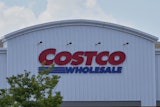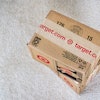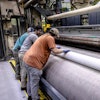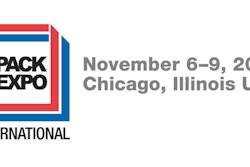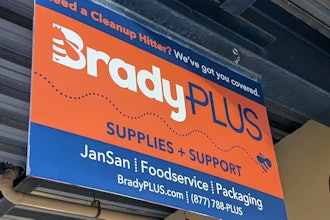Over the course of the two weeks leading up to PACK EXPO International 2016, Food Manufacturing is publishing a number of pieces of show preview content. We had the opportunity to connect with several companies exhibiting at the annual event for a quick look at topics and trends in their segment of the food and beverage industry, along with a preview of what products/technologies those companies will have on display at PACK EXPO International.
In this installment, we check in with Justin Hermsen, Senior Product Manager at ORBIS Corporation, who discusses topics and trends in reusable packaging, and highlights what the company will have on display at booth E-6801.
Q. Are there any trends in the food and beverage industry that affect or increase the need for reusable packaging solutions?
The Food Safety Modernization Act (FSMA) will drive the need for hygienic reusable pallets and containers that can be tracked throughout the supply chain. Hygienic products are characterized as easy-to-clean, non-porous products designed to cleanly move and store food within a facility and support sanitary conditions. Design characteristics include:
- One-piece designs
- Minimized areas for contaminants to collect, with no hidden cavities or hollow areas; FDA-approved material for direct food contact
- Open deck for flow-through for easy cleaning and fast drying
- Contoured surfaces/corners that lower risk of product damage from punctures or snags
- No rust, nails, staples or loose boards; non-rusting
- Does not absorb moisture or odor
The ability to track pallets allows manufacturers to have visibility of their products throughout the supply chain to know where items came from and where they are going. It enables product to be tracked back through the system to identify where it has been.
- Retail labor expense reduction is another trend affecting the need for reusables. Retailers are looking for reusable products that support one-touch streamlined merchandising.
Q. Is there a specific food industry segment that could especially benefit from reusable packaging in today’s market?
All segments can benefit from the savings of reusable packaging. The bakery, beverage and dairy segments can profit from reusables because they complement the high distribution volumes of these applications. Reusables have brought value to these segments for some time. Companies have seen reduced overall costs over time with reusability, better truckload utilization (due to standardized styles and sizes), reduced waste associated with fiber or wood packaging and improved handling for retail associates.
In other segments, when looking at the total cost of ownership over the life of reusable packaging, it is not only sustainable from an environmental perspective, but also financially.
Q. What’s next for reusable packaging as it relates to the food and beverage industry?
The next big step for food and beverage is to understand all aspects of the FSMA and learn how to implement systems and packaging that support the new regulations.
Users need to be educated on the characteristics of hygienic packaging (one-piece design, flow-through structures, etc.) and how these products can help them meet their unique requirements. For example, for allergen management, some companies need to keep raw ingredients in separate areas. The ability to use identifying pallet colors aids in visual inventory management. Another example is related to retrofitting plants for sanitation requirements. As food plants change or add new equipment, there is an opportunity to implement plastic pallets that cleanly interface with the new equipment, with no dust or debris associated with single-use pallets.
Q. How important is supply chain optimization to the food and beverage industry? What benefits does an optimized solution offer?
We see that, for our customers, system-wide efficiencies bring great benefits to the overall enterprise. Optimizing the supply chain not only reduces costs, but also reduces the impact on the environment when goods are moved as efficiently as possible.
Standardized reusable packaging drives consistency and repeatable performance throughout the supply chain, from the processing plant to the distribution center to the truck to the retail aisle.
Combining an optimized supply chain with reusable packaging is a perfect match to improving the food and beverage industry.
Q. What specific products will ORBIS display at Pack Expo? How do they meet the above needs and trends?
ORBIS is featuring several new products designed to streamline distribution:
- Pally® — Part dolly, part pallet. The Pally combines the functionality of a static pallet with the mobility of a dolly, all in one. For the food and beverage industry, this design allows for streamlined distribution to retail. Upon delivery, material can be rolled from the truck and immediately placed in the aisles for safe merchandising.
- 40x48 XP Econ — Part of the family of 40” x 48” XpressPal, the XP Econ is a one-piece hygienic design with minimal deflection. It is ideal for consumer-present retail spaces because of its smooth all-plastic construction and odorless features.
- Picking and Fulfillment Totes — These totes can be used in distribution centers for fast and efficient picking. They feature molded dividers and interface with multiple types of automated storage and retrieval systems.
Pally® is a registered trademark of Loadhog Limited, and is used under license.
